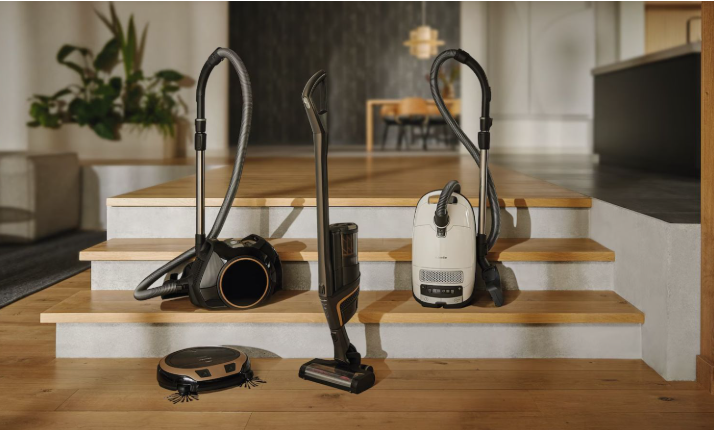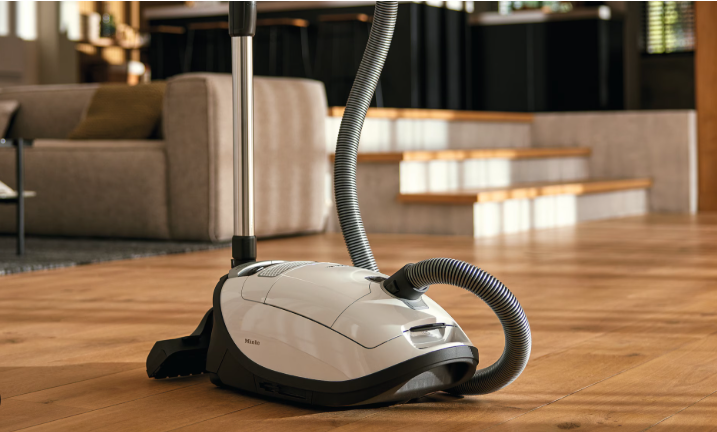The vacuum cleaner technology trends 2025 are set to redefine home cleaning with smarter, greener, and more efficient solutions. From AI-driven automation to eco-friendly designs, the latest innovations make vacuuming easier, faster, and more sustainable. This guide explores the top vacuum cleaner technology trends 2025, drawing from industry insights like CES 2024, expert reviews, and emerging patents. Whether you’re upgrading your portable vacuum cleaner or investing in a robot model, we’ll cover how these trends impact vacuum cleaner setup, maintenance, and performance, ensuring you stay ahead of the curve.
Why Vacuum Cleaner Technology Trends 2025 Matter
The vacuum cleaner technology trends 2025 reflect a shift toward automation, health-conscious cleaning, and environmental responsibility. With advancements in AI, battery life, and modular designs, vacuums are becoming smarter home assistants that reduce effort and improve air quality. These trends cater to busy households, pet owners, and eco-conscious consumers, making cleaning seamless and efficient. Our guide also includes vacuum cleaner tips to help you adapt to these innovations while ensuring vacuum cleaner safety and longevity.
Top Vacuum Cleaner Technology Trends for 2025
1. AI-Powered Cleaning Intelligence
Artificial intelligence is transforming vacuums into proactive cleaning devices, with advanced sensors and machine learning at the forefront of vacuum cleaner technology trends 2025.
- Predictive Cleaning: Models like the iRobot Roomba j10 (rumored for 2025) will use AI to analyze dirt patterns and prioritize high-traffic areas, reducing cleaning time by up to 40%.
- Enhanced Obstacle Avoidance: Improved computer vision (e.g., Roborock’s ReactiveAI 3.0) avoids pet waste, cables, and small objects with 98% accuracy.
- Personalized Schedules: Apps will sync with your calendar to clean when you’re away, integrating with Alexa or Google Assistant for voice commands.
Impact: Simplifies how to use a vacuum cleaner with minimal input; ideal for tech-savvy homes. Setup via apps will be key—ensure a 2.4 GHz Wi-Fi connection.
2. Self-Maintaining Systems
Hands-off maintenance is a major focus of vacuum cleaner technology trends 2025, with vacuums designed to care for themselves.
- Auto-Wash Docks: Robot vacuums like the Roborock Q Revo MaxV will feature docks that clean and dry mop pads, preventing mold growth.
- Self-Emptying with Compression: Docks will compact debris to hold 90 days’ worth, as seen in upcoming Dyson models.
- Smart Diagnostics: Apps will alert users to clogs, filter changes, or part wear, with auto-ordering for replacements.
Impact: Reduces vacuum cleaner maintenance to quarterly checks, saving time and effort.

3. Sustainable and Eco-Friendly Designs
Sustainability is a cornerstone of vacuum cleaner technology trends 2025, driven by consumer demand and regulations like the EU’s right-to-repair laws.
- Recyclable Materials: Brands like Miele will use 80% recyclable plastics and biodegradable bags.
- Energy Efficiency: Brushless motors will cut energy use by 50%, with solar-powered charging docks for robots.
- Modular Components: Easily replaceable parts (batteries, brushes) will extend lifespans by 5–10 years.
Impact: Aligns with eco-conscious lifestyles; expect 30% of models to be carbon-neutral by 2027. For vacuum cleaner safety, non-toxic materials will enhance home health.
4. Health and Hygiene Innovations
Health-focused features are gaining traction, addressing allergies and post-pandemic hygiene concerns.
- UV-C Sanitization: Built-in UV lights in bins and brushes (e.g., Dyson’s upcoming 2025 models) will kill 99.9% of bacteria.
- Next-Gen HEPA Filters: Capture 99.999% of particles down to 0.1 microns, with real-time air quality feedback via apps.
- Antimicrobial Coatings: Prevent mold and bacteria on vacuum surfaces, especially in wet-dry models.
Impact: Ideal for allergy sufferers; integrates with home air purifiers for holistic air quality management.
5. Multi-Function Hybrid Devices
Hybrid vacuums that combine vacuuming, mopping, and other functions are a growing part of vacuum cleaner technology trends 2025.
- Vacuum-Mop Combos: Models like the Ecovacs Deebot X2 Omni will vacuum and mop with auto-switching for carpets.
- Air Purification: Dyson’s rumored Zone 2.0 integrates vacuuming with air filtration for dual-purpose cleaning.
- Specialty Cleaning: Attachments for windows, ceilings, or car interiors will expand versatility.
Impact: Consolidates chores, saving space and time; hybrid market share expected to grow 35% by 2026.
6. Smart Home and IoT Integration
Vacuums will become central to smart home ecosystems, a key focus of vacuum cleaner technology trends 2025.
- Mesh Network Support: Vacuums like Samsung’s Bespoke Jet will act as Wi-Fi extenders or security sensors.
- Data-Driven Cleaning: Apps will track dirt levels, suggest cleaning schedules, and integrate with fitness trackers for chore planning.
- AR-Guided Setup: Augmented reality apps will simplify vacuum cleaner setup and troubleshooting.
Impact: Enhances convenience but requires robust data privacy measures.
Anticipated Models Reflecting 2025 Trends
Based on industry previews and leaks (e.g., CES 2025, tech blogs):
- Dyson Gen6 Absolute: Cordless with integrated UV sanitization and modular battery; expected Q3 2025 ($900–$1,000).
- iRobot Roomba Combo j10: AI-driven vacuum-mop with self-washing dock; rumored for late 2025 ($1,400).
- Roborock S9 Pro Ultra: 360° navigation and eco-friendly materials; expected Q2 2025 ($1,200).
- Miele Scout RX4: Robot with biodegradable filters and 10-year lifespan; projected for mid-2025 ($800).

How These Trends Impact Vacuum Cleaner Setup
The vacuum cleaner technology trends 2025 will streamline setup processes:
- Smart Setup: Use AR apps or voice assistants to configure mapping and schedules.
- Wi-Fi Integration: Ensure a stable 2.4 GHz or 5 GHz connection for seamless app control.
- Initial Testing: Run short cleaning cycles to calibrate AI and sensors.
Tip: Visit VacuumCleanerT for setup guides tailored to smart vacuums.
Vacuum Cleaner Maintenance in 2025
Future-proof your vacuum with these vacuum cleaner maintenance practices:
- Automated Alerts: Respond to app notifications for filter or brush cleaning.
- Filter Care: Rinse advanced HEPA filters quarterly; replace every 12–18 months.
- Self-Cleaning Docks: Empty debris every 60–90 days; clean mop pads monthly.
- Software Updates: Install firmware updates to optimize AI and navigation.
Vacuum Cleaner Troubleshooting for New Tech
New tech brings new challenges. Common vacuum cleaner troubleshooting tips for 2025 models:
- AI Navigation Issues: Reset maps via the app; clear obstacles.
- Connectivity Problems: Restart Wi-Fi and ensure 2.4/5 GHz compatibility.
- Weak Suction: Check for clogs in self-cleaning docks or hoses.
- Sensor Errors: Wipe cameras and sensors with a dry cloth monthly.
Vacuum Cleaner Safety in 2025
Ensure vacuum cleaner safety with advanced tech:
- Data Privacy: Choose models with end-to-end encryption for app data.
- UV Safety: Ensure UV-C lights deactivate when accessing bins.
- Smart Home Security: Use secure Wi-Fi networks to prevent hacking.
Conclusion: Embrace Vacuum Cleaner Technology Trends 2025
The vacuum cleaner technology trends 2025 promise smarter, greener, and healthier cleaning with AI, self-maintenance, and sustainable designs. From predictive cleaning to hybrid vacuum-mop-air purifiers, these innovations will make your vacuum cleaner for everyday use more efficient and user-friendly. By preparing for smart setups and following our best vacuum cleaner guide, you’ll maximize these advancements. For the latest on vacuum cleaner tips, maintenance, and troubleshooting, visit VacuumCleanerT today.